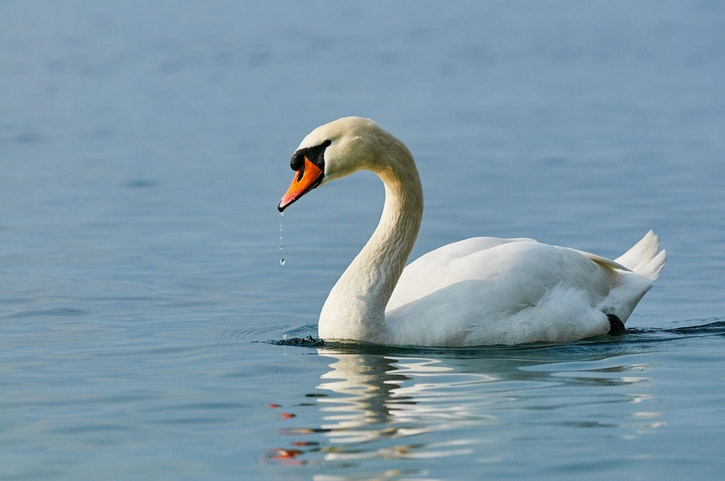Critter of the Quarter: Mute Swan

The Mute Swan (Cygnus olor) is an elegant bird with a long, distinguished neck and often swims holding its wings raised slightly above its back. Although they are a familiar sight in local parks, bays, and wetlands, Mute Swans are not native to North America. Mute Swans were imported from Europe to adorn large estates, parks, and zoos.
Adult Mute Swans are white with a black face patch and black to grayish-pink legs. They can be distinguished from other swan species by their orange bill with fleshy, black knob, long “S” shaped neck, and long tail feathers. Both adults tend to their young, cygnets, who fledge in 4-5 months and usually remain with their parents through their first winter. Despite their name, Mute Swans are not silent. Their vocalizations are much quieter than other swans, but they will grunt, snort, or hiss.
Mute swans have huge appetites, eating up to 8 pounds per day, often disturbing local ecosystems, displacing native species, and even posing a threat to humans. Mute swans are known for their aggressive behavior, especially when nesting and protecting their young. To protect yourself and our local wildlife, it’s best to observe from a safe distance.







